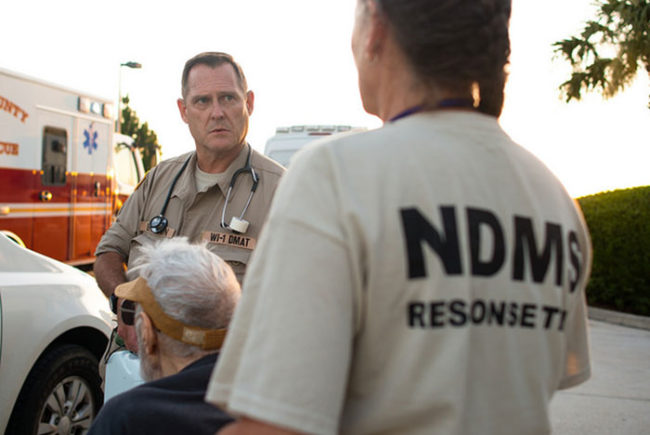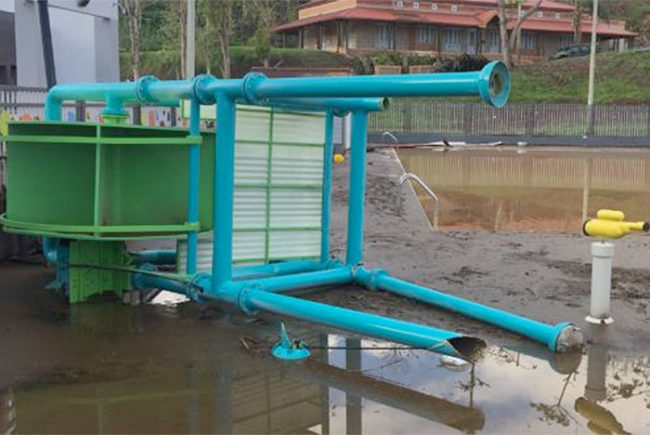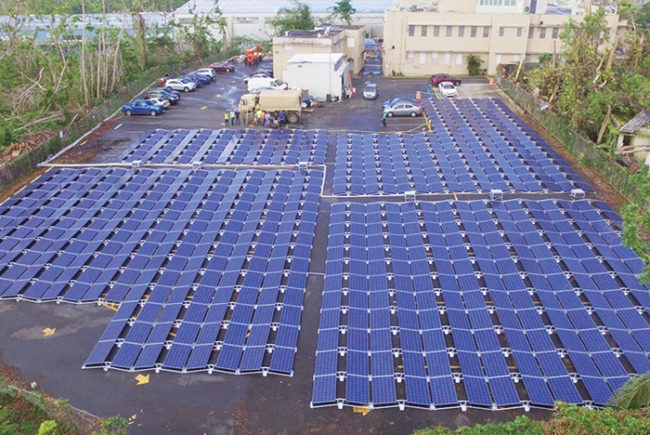HHS implements strategy to shore up Puerto Rico health facilities
The Department of Health & Human Services (HHS) is implementing a three-tiered strategy to support hospitals in Puerto Rico following hurricanes Irma and Maria.
The agency has:
- Deployed medical teams with their own equipment and medical supplies to provide care at an emergency and trauma center in San Juan;
- Dispatched medical teams and set up temporary medical sites to augment one hospital in each of five regions of the territory;
- Placed a liaison in each of the other open hospitals to monitor needs and alert officials if a generator fails and patients must be evacuated to other hospitals.
In addition to these efforts, the Department of Defense 250-bed hospital ship USNS Comfort was deployed to Puerto Rico with more than 500 medical personnel on board. It is equivalent to a Level II trauma center and offers the full range of medical care with surgical, obstetric and pediatric capability.
HHS also is deploying five federal medical stations from the Strategic National Stockpile to serve as shelters for people with special medical needs at any location designated by the Puerto Rico Department of Health. Each federal medical station provides up to 250 beds and is staffed by National Disaster Medical System and U.S. Public Health Service Commissioned Corps officers and personnel from the Department of Veterans Affairs.
NIOSH releases software to monitor safety of emergency, recovery responders
The National Institute for Occupational Safety and Health (NIOSH) announces the availability of a new software platform called Emergency Responder Health Monitoring and Surveillance (ERHMS) Info Manager to track and monitor emergency response and recovery worker activities during all phases of emergency response following a natural disaster or other public health emergency.
The custom-built software developed by NIOSH is free and can be used by anyone involved in the deployment and protection of emergency responders, including: incident command staff, response organization leadership, health, safety and medical personnel, and emergency responders.
Users can:
- Create responder profiles;
- Record response incidents and map incident locations;
- Assign responders to an incident roster;
- Design forms and surveys using custom and pre-built templates;
- Request information from responders by using forms and surveys;
- View and analyze forms and survey responses.
“By being able to easily collect, analyze and report health data, ERHMS Info Manager decreases the time required to identify exposures and signs and symptoms of illness throughout an emergency response to ensure that workers are not harmed and can respond effectively,” said NIOSH ERHMS Coordinator Jill Shugart, MSPH. “Data collected before, during and after a response also helps to identify which responders would benefit from medical referral and possible enrollment in a long-term health surveillance program.”
CDC issues update on emerging multidrug-resistant yeast
The Centers for Disease Control and Prevention (CDC) issued recommendations to help health care providers and laboratories prevent the spread of Candida auris, an emerging, multidrug-resistant yeast. CDC alerted health care facilities to the concern last year and provided an update this May.
As of Aug. 31, 153 confirmed or probable cases of C. auris infection have been reported from 10 states, with most of the cases in New York and New Jersey.
"The key to controlling its spread is rapidly identifying infected or colonized patients, and implementing effective infection control measures including hand hygiene, adherence to contact precautions, and performing thorough environmental disinfection," CDC states.
Joint Commission updates several life safety standards
The Joint Commission has released updated prepublication standards that include new, revised and relocated elements of performance to its Life Safety, Environment of Care and Equipment Management chapters.
The prepublications are available on the Joint Commission website. The American Society for Healthcare Engineering is working to develop guidance that explains the changes. The effective date of the prepublication standards is Jan. 1.
VA proposes to allow providers to practice telehealth across state lines
The Department of Veterans Affairs (VA) published a proposed rule that would allow any VA health care provider to provide telehealth services within their scope of practice and in accordance with privileges granted to them by the department, no matter where the provider and beneficiary are located.
“VA has developed a telehealth program as a modern, beneficiary- and family-centered health care delivery model that leverages information and telecommunication technologies to connect beneficiaries with health care providers, irrespective of the state or location within a state where the health care provider or the beneficiary is physically located at the time the health care is provided," the department states.
VA will accept comments on the proposed rule through Nov. 1.





